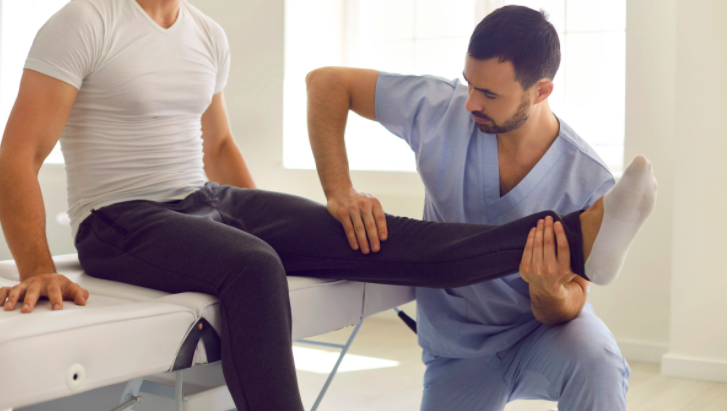
ACL Surgery Recovery Tips

If you have suffered an ACL injury and are seeking Orthopedic Glen Rock, NJ, New York Sports Medicine Institute is here for you. The stress and pain involved in an ACL injury can often be overwhelming for patients. Recovery can be a lengthy process, however, there are tips to help you get back on your feet and doing what you love as quickly as possible.
ACL Injuries
An anterior cruciate ligament, or ACL, is a strong band of tissue that connects the thigh bone to the shinbone at the knee. An ACL tear is a common knee injury seen especially in athletes. The injury is caused by a tear or sprain of the ligament. This painful trauma often requires surgery and physical therapy.
There are three types of ACL sprains:
- Grade I: Overstretched ligament that is considered the mildest form of injury and can be treated without surgery.
- Grade II: Fibers of the ligament are partially torn. The ACL is stretched to the point that it is loose and requires surgery.
- Grade III: A complete tear of the ACL into two seperate sections and requires surgery. This is the most common sprain among athletes.
Common Causes for ACL Tear
Sports and fitness activities are the main causes of ACL injuries. Popular sports that are commonly related to ACL injuries include football, basketball, tennis, soccer, and downhill skiing. This is because these sports require increased agility from athletes. The swift motions then create risk for possible injury. Some examples of a movement that put stress on the knees and cause ACL tears are:
- Quick pivoting or “cutting”
- Landing incorrectly from a jump
- Sudden stops
- Twisting the knee
- Sustaining a direct hit on the knee
ACL Surgery Recovery Tips
If you are in need of surgery, the days, weeks, and months following the procedure are crucial to recovery. Rehabilitation is a slow process that requires dedication and perseverance. For many athletes, an ACL injury is not only painful physically but also mentally. You may want to pick up and continue your sport right where you left off, however, this is the time to slow down and focus on healing. How well you can take care of your body after surgery may determine the overall success of the procedure. Here are some helpful tips for healing after your ACL surgery:
Establish Your Recovery Goals
Orthopedic Glen Rock, NJ at New York Sports Medicine Institute has a team of highly skilled professionals that are dedicated to helping you throughout your recovery journey. Directly after your procedure, it is important to meet with your physician to discuss your goals for recovery. Be sure to ask any questions you may.
Ease the Pain and Reduce the Swelling
ACL surgery is a reconstruction or replacement of the ACL in your knee. Post-surgery, many patients will be required to take prescribed medications to help ease pain and decrease inflammation. Icing and elevating the knee are necessary for reducing the swelling. This is also the time to be taking it easy, staying off the affected leg, and getting plenty of rest.
Care For Your Incisions
Like any surgery, it is imperative to take care of the incisions to avoid possible infection. Be sure to keep the area clean, avoid submerging in water, and follow up with your doctor for the removal of stitches. Signs of wound infection include warmth, redness, increased swelling, and draining of excess fluids.
Physical Therapy
After ACL surgery, the patient must work on regaining stability. Wearing a brace and using crutches can help to reduce pressure on the knee as well as provide support. Regaining mobility, strength, and stability can be a lengthy but rewarding process. Physical therapy allows patients to work on rehabilitation and is crucial to making a full recovery. Extension and flexion are slowly practiced while the knee begins to recover. To prevent future injuries, the knee must be exercised and strengthened.
Request an Appointment for Orthopedic Glen Rock, NJ
Sports-related injuries are possible no matter the athlete’s skill level or experience. If you play a sport, you are at risk of damaging your ACL. If you are injured, seeking immediate care is crucial for recovery. The dedicated team at New York Sports Medicine Institute is ready to help you throughout the entirety of your recovery process. To request an appointment, visit our website or call today!
